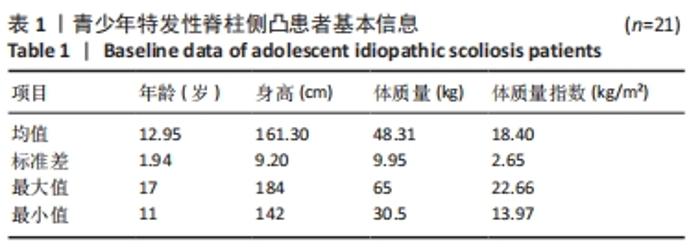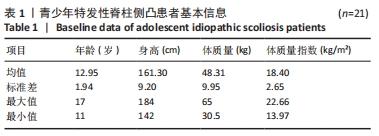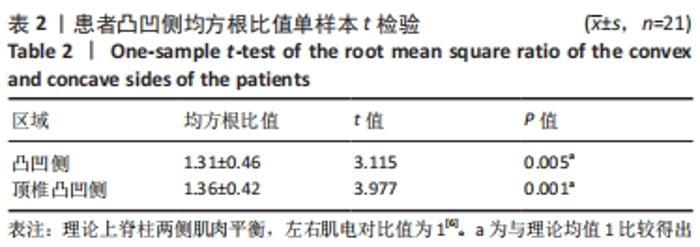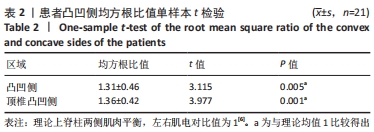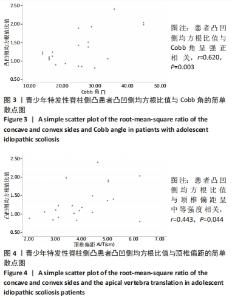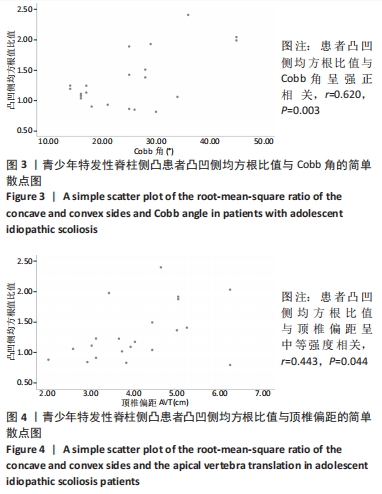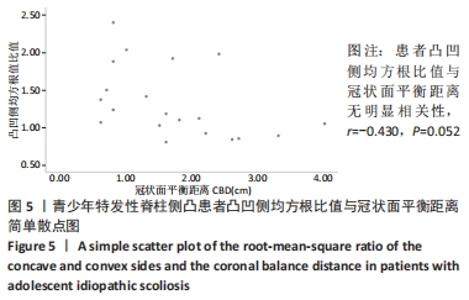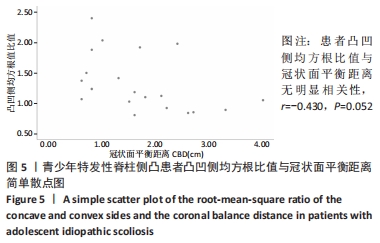[1] GUAN T, ZHANG Y, ANWAR A, et al. Determination of Three-Dimensional Corrective Force in Adolescent Idiopathic Scoliosis and Biomechanical Finite Element Analysis.Front Bioeng Biotechnol. 2020;8:963.
[2] WATANABE K, OHASHI M, HIRANO T, et al. Health-Related Quality of Life in Nonoperated Patients With Adolescent Idiopathic Scoliosis in the Middle Years: A Mean 25-Year Follow-up Study. Spine. 2020;45(2):E83-E89.
[3] WANG Y, YANG F, WANG D, et al. Correlation analysis between the pulmonary function test and the radiological parameters of the main right thoracic curve in adolescent idiopathic scoliosis. J Orthop Surg Res. 2019;14(1):443.
[4] LI J, TSENG CC, YUAN YW, et al. Determining the association between the radiographic parameters and the SRS-22 scores in Chinese female patients with adolescent idiopathic scoliosis: does curve pattern matter?. Br J Neurosurg. 2021;1-7. doi: 10.1080/02688697.2021.1875396.
[5] 陈禹彤, 姚黎清, 李旺祥,等. 青少年特发性脊柱侧凸与伏案时长的相关性研究及其足底压力分析[J]. 中国康复,2020,35(4):187-190.
[6] KWOK G, YIP J, CHEUNG MC, et al. Evaluation of Myoelectric Activity of Paraspinal Muscles in Adolescents with Idiopathic Scoliosis during Habitual Standing and Sitting. Biomed Res Int. 2015;2015:958450.
[7] 尹佳. 青少年特发性脊柱侧凸椎旁肌肌纤维转化及机制研究[D].上海:中国人民解放军海军军医大学,2020.
[8] WAJCHENBERG M, MARTINS DE, LUCIANO RP, et al. Histochemical analysis of paraspinal rotator muscles from patients with adolescent idiopathic scoliosis: a cross-sectional study. Medicine (Baltimore). 2015;94(8):e598.
[9] STETKAROVA I, ZAMECNIK J, BOCEK V, et al. Electrophysiological and histological changes of paraspinal muscles in adolescent idiopathic scoliosis. Eur Spine J. 2016;25(10):3146-3153.
[10] CHEUNG J, HALBERTSMA JP, VELDHUIZEN AG, et al. A preliminary study on electromyographic analysis of the paraspinal musculature in idiopathic scoliosis. Eur Spine J. 2005;14(2):130-137.
[11] OLIVEIRA AD, GIANINI P, CA MARINI P, et al. Electromyographic analysis of paravertebral muscles in patients with idiopathic scoliosis. Spine. 2011;36(5): E334.
[12] BASSANI E, CANDOTTI CT, PASINI M, et al. Assessment of neuromuscular activation in individuals with scoliosis using surface electromyography. Revista Brasileira de Fisioterapia. 2008;12(1):13-19.
[13] 许轶,王楚怀,赖建洋,等.青少年特发性脊柱侧弯症患者凸凹侧椎旁肌平均肌电比值与Cobb角度相关度的分析研究[J].中国康复医学杂志,2007, 22(12):1078-1080.
[14] 袁望舒,陈丽霞,沈建雄,等.青少年特发性脊柱侧凸患者顶椎椎旁肌表面肌电信号与Cobb角及轴向躯干旋转角的相关性[J].中国组织工程研究,2019, 23(24):3824-3828.
[15] SUH SW, MODI HN, YANG JH, et al. Idiopathic scoliosis in Korean schoolchildren: a prospective screening study of over 1 million children. Eur Spine J. 2011;20(7): 1087-1094.
[16] KAMAL Z, ROUHI G. Stress distribution changes in growth plates of a trunk with adolescent idiopathic scoliosis following unilateral muscle paralysis: A hybrid musculoskeletal and finite element model - ScienceDirect. J Biomech. 2020;111: 109997.
[17] THENARD T, VERGARI C, HERNANDEZ T, et al. Analysis of Center of Mass and Gravity-Induced Vertebral Axial Torque on the Scoliotic Spine by Barycentremetry. Spine Deform. 2019;7(4):525-532.
[18] SCHMID S, BURKHART KA, ALLAIRE BT, et al. Spinal compressive forces in adolescent idiopathic scoliosis with and without carrying loads: a musculoskeletal modeling study. Front Bioeng Biotechnol. 2020;8:159.
[19] KWAN KYH, CHENG ACS, KOH HY, et al. Effectiveness of Schroth exercises during bracing in adolescent idiopathic scoliosis: results from a preliminary study—SOSORT Award 2017 Winner. Scoliosis Spinal Disord. 2017;12:32.
[20] FALSO M, FORTI, IEZZI S, et al. Perceptive and Rehabilitative Muscle Recruitment Facilitation Secondary to the use of a Dynamic and Asymmetric Spine Brace in the treatment of Adolescent Idiopathic Scoliosis (AIS). Nov Physiother Rehabil. 2018;2: 054-079.
[21] BRINK RC, HOMANS JF, SCHLÖSSER T, et al.CT-based study of vertebral and intravertebral rotation in right thoracic adolescent idiopathic scoliosis. Eur Spine J. 2019;28(12):3044-3052.
[22] KO JY, SUH JH, KIM H, et al. Proposal of a new exercise protocol for idiopathic scoliosis: A preliminary study. Medicine (Baltimore). 2018; 97(49):e13336.
[23] MAMYAMA T, KITAGAWAL T, TAKESHITA K, et al. Side shift exercise for idiopathic scoliosis after skeletal maturity. Stud Health Technol Inform. 2002;91:361-364.
[24] GIORDAMNI MA, CHANDOLIAS K, POLLATOS D, et al. Adolescent Idiopathic Scoliosis: Review of Conservative Treatment with Physiotherapy Scoliosis Specific Exercises. J Health Sci Res. 2021;11(1):88-89.
|
